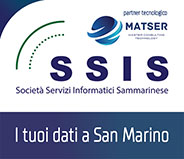L’obiettivo di Science & Technology Parks è quello di promuovere l’innovazione e la competitività delle imprese e della crescita economica di conseguenza.
di Claudio Antonelli
L’ultimo accordo quadro in materia economica firmato tra Italia San Marino nel suo articolo 8 prevede: “La creazione di un Parco Scientifico-Tecnologico italo-sammarinese rappresenta uno dei primi obiettivi della collaborazione scientifica, per il quale le Parti auspicano l’avvio di gemellaggi tra il Parco e i principali Poli e Parchi Scientifico-Tecnologici italiani”.
L’obiettivo di Science & Technology Parks è quello di promuovere l’innovazione e la competitività delle imprese e della crescita economica di conseguenza. L’ente che avrà il compito di gestire il parco sarà paritetico (sammarinese e italiano) ma la società sarà esclusivamente di diritto sammarinese, con relativa tassazione. I laboratori di ricerca e sviluppo, gli incubatori, le nuove aziende e le residenze saranno concentrati in un’area limitata non superiore ai 10 ettari. Opportunità di lavoro per i giovani, rivalutazione e rilancio culturale del territorio e incremento della competitività delle aziende. Ma anche leva per gli investitori esteri.
Il fondo sovrano di investimenti cinese, per fare un esempio macro, ha voluto investire nelle infrastrutture europee, per stimolare la crescita economica globale. Un caso su tutti l’alta velocità inglese: il progetto ha attirato l’attenzione del colosso di Pechino, che ha in tasca 410 miliardi di dollari di risorse. Londra si è subito detta aperta all’offerta cinese. Altri Paesi vedono con diffidenza l’arrivo dei fondi sovrani temendo una sovraesposizione della propria economia. E vorrebbero limitare gli investimenti dei Paesi emergenti alle tipologie prettamente finanziarie: dai titoli di debito alle società quotate. In realtà, in periodi di rischio credit crunch alla tecnologia servono spinte e incentivi per superare i momenti difficili dell’economia. Soprattutto per il Vecchio Continente che soffre di limiti strutturali e di una politica che fatica a stare al passo coi tempi. Una delle spinte per la Ricerca e lo Sviluppo si chiama tassazione agevolata e San Marino con il suo Parco tecnologico potrà appoggiare non solo le aziende italiane ed europee ma anche quelle provenienti da resto del mondo. Spesso i Paesi emergenti sono in grado di mischiare le capacità a breve termine tipiche delle disponibilità liquide, alle visioni a lungo termine. L’esempio più imponente arriva dagli Emirati Arabi Uniti. Mubadala Development Company si occupa di effettuare investimenti strategici con realtà locali, regionali ed internazionali coprendo una ampia gamma di settori di mercato, dall’aereospaziale all’energetico, dal sanitario all’immobiliare. Ecco, San Marino dal canto suo si trova nel punto geografico ideale per unire il know how del vecchio continente alla lungimirante visione delle economie in forte progressione. Il tutto con il fisco migliore e su misura. Nel Polo, investitori emiratini potrebbero puntare su tecnologia italiana, acquisirne il know e metterla a leva nei paesi del Golfo. Ma c’è l’altro lato della medaglia. Non possono certo bastare i fondi sovrani. Il tessuto delle Pmi si fa con il credito legato al territorio e quindi il ruolo delle banche del Titano sarà sempre più importante. Un tempo la ricerca e lo sviluppo si finanziavano allo sportello, concedendo piccole cifre per acquistare nuovi macchinari, ora gli strumenti sono cambiati. Ma le relazioni banca cliente devono restare le stesse, o meglio ancora, tornare ai bei tempi. Servirà dunque personale specializzato che capisca e segua i progetti di R&D, li stimoli e poi li finanzi.
Venerdì 11 maggio, non a caso, ci sarà un focus sul ruolo degli istituti di credito nel futuro polo tecnologico. L’obiettivo sta nel creare un cordone permeabile perché ciò che succede dentro il Polo tecnologico sia uno specchio di quello che accade all’esterno del Parco. E pure viceversa. Perché non si può pensare che un polo tecnologico nasca dal nulla. O in un luogo senza la adeguata cultura finanziaria. La meta nel lungo termine sta nel fare in modo che San Marino possa diventare un punto geografico di attrattiva delle start, se ci saranno fondi magari partecipati dalle banche in grado di sviluppare i germogli delle nuove iniziative e personale degli istituti capace di leggerne i business plan. Nel breve periodo l’obiettivo però deve essere, da un lato, sciogliere tutta quella burocrazia che certo non facilita start up e tecnologia e dall’altro completare il percorso di trasparenza e apertura.
The technology park will attract not only Italian businesses but also those from the rest of the world
Article 8 of the last framework agreement on economic matters signed by Italy and San Marino reads: “The creation of an Italian-San Marino science and technology park is one of the first objectives of scientific collaboration by which the parties hope to start a twinning between the park itself and the main Italian science and technology centres and parks”. The aim of science and technology parks is to promote innovation and the competitiveness of businesses and as a result, economic growth. The body that will have the task of managing the park will be bilateral (San Marino and Italy), but the company will be founded under San Marino law alone, also adopting its taxation system. The research and development laboratories, business incubators, new companies and residences will be concentrated in a territorially-limited area that is entirely within the borders of San Marino. It will provide job opportunities for young people, the cultural revaluation and relaunching of the territory and an increase in the competitiveness of companies, but will also offer benefits for foreign investors. To give a key example, the Chinese sovereign investment fund has decided to invest in European infrastructures in order to stimulate global economic growth. One case in particular is Britain’s high-speed rail network: the project has attracted the attention of the Peking giant, which has 410 billion dollars of resources to play with. London immediately said it was open to the Chinese offer, although other countries view the arrival of sovereign funds with distrust, fearing an overexposure of the economy and would prefer to limit investments from emerging countries to strictly financial forms – from debt securities to listed companies. However, during periods that are at risk of a credit crunch, technology requires certain triggers and incentives in order to overcome difficult economic times. Especially in Europe where there are structural limits and policies that find it hard to keep up with the times. One of the things that can trigger research and development are tax concessions and thanks to its technology park, San Marino can support not only Italian and European companies, but also those from the rest of the world. Often emerging countries have the ability to combine the short-term capacity typical of liquid assets with long-term vision. The most impressive example comes from the United Arab Emirates. Mubadala Development Company deals with making strategic investments in local, regional and international realities and covers a vast range of market sectors – from aerospace to energy and from healthcare to real estate. On its part, San Marino is in an ideal geographical position for combining the expertise and know-how of Europe with the far-sighted vision of economies that are growing strongly. And all with the best, tailor-made taxation system. In the park, investors from the United Arab Emirates could focus on Italian technology, acquire its know-how and offer its advantages to Gulf countries. But there’s the flip side of the coin too. Sovereign funds are certainly not enough. The fabric of small and medium-sized enterprises is built thanks to credit linked to the territory and therefore, the role of San Marino’s banks will become increasingly important. Research and development were once financed over the counter, when small sums were granted to purchase new machinery; these tools have changed, yet customer-bank relations must stay the same or, better still, return to the good old days. It will therefore be necessary to employ specialist personnel who understand and can follow R&D projects, stimulate them and then finance them. For this reason, on Friday, 11 May there will be a focus on the role of credit institutes in the future technology park. The objective is to create a link that ensures what happens inside the technology park reflects what is happening outside it and vice versa. Because a technology park does not come out of nothing and neither does it grow in a place without a suitable financial culture. The long-term goal is to ensure that San Marino becomes an attractive geographical location for business start-ups if there are funds, perhaps with contributions from the banks, capable of developing the seeds of new initiatives and bank personnel who can understand their business plans. The short-term objective must be on the one hand, to bring an end to all the bureaucracy that certainly doesn’t facilitate business start-ups and technology and, on the other hand, to complete the road to transparency and openness.


